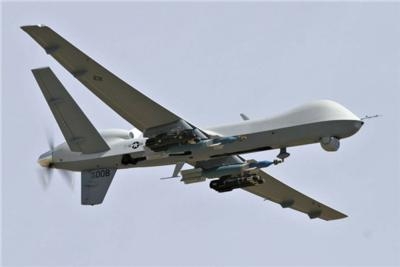Mon, Jun 22, 2015
New Variant On Track To Be Certified For Flight In European Airspace
A significant milestone has been reached in in the Independent Research and Development (IRAD) program to design, develop, and produce a variant of the Predator B RPAfor the General Atomics Predator B unmanned aircraft. The company announced last week that it is on track to be certified for flight according to the NATO Airworthiness Standard for unmanned aircraft.

The Certifiable Predator B (CPB) has completed a successful internal Phase 1 Critical Design Review (CDR), along with reviews by two prospective European customers. Development of the system follows international airworthiness standards that include STANAG 4671, UK DEFSTAN 00970, SAE ARP4754A, MIL HDBK-516C, DO-178, and DO-254, as well as others. Certification of delivered systems will be granted by the responsible agencies within each country. The company is on schedule to conduct flight tests of a test aircraft in 2016, leading to the first flight of a certifiable production aircraft in 2017.
“Completion of this first CDR is the culmination of several years of review of requirements and design compliance with the certification agencies,” said Linden Blue, CEO, GA-ASI. “The company also has made a significant investment to solve issues associated with flying RPA within civilian airspace. Certifiable Predator B will represent the first RPA system in its class to achieve this breakthrough.”
Certification-compliant wings and redesigned tails will complete flight-testing on a company-owned Predator B aircraft in late 2015. This flight-testing represents a key milestone for the CPB RPA. The wings span 79 feet and enable over 40 hours of flight time for the aircraft. The company also has applied for FAA Type Certification and is working with the FAA to develop Unmanned Aircraft Systems (UAS) airworthiness standards.
GA-ASI is focused on the development and testing of Detect and Avoid (DAA) capabilities for RPA, combining Traffic and Collision Avoidance System (TCAS) II with the company’s Due Regard Radar (DRR) to enable both automatic collision avoidance and the ability to remain well clear of other airspace users. The integrated DAA system will continue to fly aboard NASA’s Ikhana (Predator B) in 2015 in support of a series of NASA flight tests. These tests will measure the performance of the entire system in a variety of situations to support the ongoing standards development within the RTCA Special Committee 228. Additionally, the CPB aircraft integration testing has confirmed the capability to handle multiple configurations of certified electronics, such as Technical Standard Orders (TSO)-certified Identification Friend or Foe (IFF) transponders and communications radios from other industry partners.
(Image from file)
More News
Option Approach An approach requested and conducted by a pilot which will result in either a touch-and-go, missed approach, low approach, stop-and-go, or full stop landing. Pilots >[...]
"Emirates is already the world's largest Boeing 777 operator, and we are expanding our commitment to the program today with additional orders for 65 Boeing 777-9s. This is a long-t>[...]
(Pilot) Reported That There Was A Sudden And Violent Vibration Throughout The Airplane That Lasted Several Seconds Analysis: The pilot was returning to his home airport at an altit>[...]
“This recognition was evident during the TBMOPA Annual Convention, where owners and operators clearly expressed their satisfaction with our focus on customer service, and enc>[...]
Overhead Maneuver A series of predetermined maneuvers prescribed for aircraft (often in formation) for entry into the visual flight rules (VFR) traffic pattern and to proceed to a >[...]
 ANN's Daily Aero-Term (11.19.25): Option Approach
ANN's Daily Aero-Term (11.19.25): Option Approach Aero-News: Quote of the Day (11.19.25)
Aero-News: Quote of the Day (11.19.25) NTSB Final Report: Sting Sport TL-2000
NTSB Final Report: Sting Sport TL-2000 Aero-News: Quote of the Day (11.20.25)
Aero-News: Quote of the Day (11.20.25) ANN's Daily Aero-Term (11.20.25): Overhead Maneuver
ANN's Daily Aero-Term (11.20.25): Overhead Maneuver



